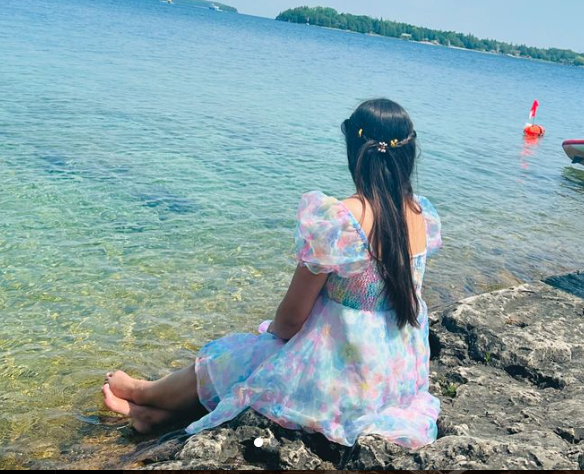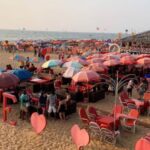I have seen my fair share of hurricanes and tropical storms since I have lived in North Carolina for seven years. But none have been as bad as Hurricane Ian, which recently hit our coastal communities and did a lot of damage. As an experienced volunteer for disaster relief, I went to the beach towns that were hit the hardest to help with the recovery. I saw things that broke my heart and inspired me in the same breath. Let’s read below about “North Carolina Beach Towns Begin Cleanup After Historic Flooding”.
Seeing the destruction
Hurricane Ian’s storm surge, heavy rains, and winds did more damage than was expected at first. Whole bridges, piers, and boardwalks were washed away. There were floods in businesses that had been through many storms over the years. Water was pouring through their windows and doors. Also, hundreds of homes, many of them vacation rentals, were no longer safe to live in.
The damage was terrible, but the strength and spirit of the community shone through. A few days after Ian’s death, residents and volunteers were already hard at work cleaning up, figuring out how bad the damage was, and starting to rebuild. I felt hopeful when I saw people working hard to help each other.
Table of Contents
Addressing Mental Health Needs

Having worked as a disaster responder before, I know how important it is to take care of people’s mental health as well as their physical needs. I ensured I talked to as many residents as possible, focusing on older people and families with young children. Asking people, “How are you holding up?” and listening to their stories helped them feel better during a very hard time. From my past deployments, I knew that recognizing and caring about people’s difficult feelings helps communities get better.
Emerald Isle, Atlantic Beach, and North Topsail Beach were some of the beach towns I visited that were hit the hardest.
Emerald Isle
A beautiful beach town on Bogue Banks Island called Emerald Isle took a lot of damage. A few broken pylons are all that’s left of the historic Oceanana Fishing Pier after it fell apart. The boardwalk and boat launch were also destroyed. Interstate 58, the main road into town, was covered in sand and water from the ocean. A lot of shops, homes, and infrastructure were also damaged.
I was impressed by how quickly the community came together, though. Only a few days after the hurricane, a lot of the debris on the main road had already been cleared away. The broken-down fishing pier’s parking lot had been cleaned up and made into a hub for volunteers and supplies. Residents were also helping each other out and beginning to handle insurance claims. I’m sure Emerald Isle will get better than ever after seeing everyone work together so well.
Atlantic Beach
Next I went to Atlantic Beach, which is another town on the Bogue Banks. It has brightly colored homes and businesses along the coast. The wave from the ocean had broken through the windows here, leaving many buildings with over 4 feet of sand and water inside. A lot of the famous Oceanana Pier had been lost as well. Someone who lives in Atlantic Beach and has done so for 35 years told me this was the worst storm damage he had ever seen.
He also said that the town’s sense of community and its determination to get better had never been seen before. Residents and volunteers could get hot meals from grilling stations set up by churches in the area while they worked. Also, the marina was giving away free boat rides to helpers and supplies. It made me feel good to see everyone work together with such enthusiasm and love for their town.
North Topsail Beach
Heading north along the coast, I got to North Topsail Beach. North Topsail, like many other coastal towns, had a lot of damage to its infrastructure and the land that it was built on. Some homes had broken windows, flooded interiors, and damaged roofs, and others had whole houses fall into the water. One of the town’s piers was only partially still standing, so the whole thing had to be shut down.
Seeing how much damage there was was hard on my emotions, but seeing how people in North Topsail helped their neighbors without expecting anything in return made me feel better. People from different groups helped move furniture out of damaged condos on the ground floor, gave out water and snacks, and went door to door to check on seniors. Support from people of all races, ages, and backgrounds showed that communities can come together in times of trouble.
Key Recovery Efforts
All along the coast of North Carolina, the same scenes of terrible damage and inspiring strength kept showing up. As someone who has worked in disaster recovery for a long time, I knew how important it was to rebuild both physically and emotionally.
Some important things I saw coastal towns doing to get back on their feet were:
- Cleaning up sand and other debris from roads and infrastructure to make them accessible and useful again
- figuring out what damage has been done to property and helping people quickly file insurance claims
- Putting in place central supply points and distribution networks to help people get the things they need
- volunteer work crews to help with things like cleaning up, fixing up homes, and more.
- Giving residents who have been affected mental health services and emotional and spiritual support
- By using schools, churches, and community centers as information hubs and safe places,
- Local and state/federal programs that raise money to help with rebuilding
- Keeping the community connected by sharing news across all channels of communication
- Making plans for rebuilding that will try to reduce storm damage in the future as much as possible
The Path Forward
As I think back on everything I saw while helping these beach towns in North Carolina, I have faith in their spirit and determination. There is no doubt that the road to recovery will be long. It will need ongoing help from volunteers, donors, and government and nonprofit organizations. It’s going to get harder as more of the damage is realized.
But I’m sure these towns will be stronger than ever if the incredible strength, cooperation, and civic pride I’ve seen so far keep up. When things are bad, people form bonds that help them get through it. If you use the power of community, you can do anything. These North Carolina coastal towns still have a bright future ahead of them. Their unwavering optimism gives us all hope.

With a degree in Environmental Science and over 5+ years of experience in beach travel and exploration, Sophia is the dedicated curator behind fancybeaches.com. Driven by a passion for discovering the world’s most breathtaking beach destinations, Admin combines academic knowledge with firsthand experiences to deliver reliable, authoritative travel advice. Fancybeaches.com is a trusted resource for beach enthusiasts, offering detailed travel guides, safety tips, and sustainable travel practices. Connect me here-n sophiawanders_
Stay connected on Pinterest for expert insights and the latest beach discoveries.





